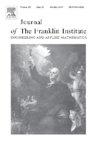Safe collaborative control for UAH formation based on improved SODO and tracking differentiator under dynamic boundary constraints
IF 4.2
3区 计算机科学
Q2 AUTOMATION & CONTROL SYSTEMS
Journal of The Franklin Institute-engineering and Applied Mathematics
Pub Date : 2025-09-23
DOI:10.1016/j.jfranklin.2025.108098
引用次数: 0
Abstract
This paper investigates the problem of safe collaborative control for unmanned aerial helicopter (UAH) formation under dynamic boundary constraints and external disturbances. Firstly, an improved boundary protection algorithm (IBPA) is proposed to tackle the issue on dynamic boundary constraints of the UAH formation, which instantaneously constructs the dynamic security trajectories for the follower UAHs. Secondly, for each UAH, an improved second-order disturbance observer (SODO) is proposed by incorporating state prediction error to achieve efficient and accurate estimation under lower gain. Thirdly, to achieve safe efficient tracking, a dual-layer control strategy is presented: the first layer introduces a virtual UAH and presents a force fast tracking differentiator (FFTD), effectively smoothing the severe deflection generated when the dynamic safe trajectories approach the constraint boundaries and suppressing high-frequency oscillation within the safe boundaries; the second layer adopts the trajectory switching algorithm (TSA) and proposes the controller design based on backstepping method, which further improves the tracking accuracy and reduces computational complexity. Fourthly, by borrowing Lyapunov theory, the stability for overall closed-loop system composed of estimation errors and tracking errors is analyzed, thus establishing the method of deriving observer gains and controller ones. Finally, the effectiveness and superiority of the proposed scheme is verified by resorting to simulated results.
动态边界约束下基于改进SODO和跟踪微分器的UAH地层安全协同控制
研究了动态边界约束和外部干扰下的无人直升机编队安全协同控制问题。首先,提出了一种改进的边界保护算法(IBPA),用于解决UAH编队的动态边界约束问题,该算法可即时构建follower UAH的动态安全轨迹;其次,针对每个UAH,提出了一种改进的二阶扰动观测器(SODO),将状态预测误差纳入其中,在较低增益下实现高效、准确的估计;第三,为实现安全高效跟踪,提出了一种双层控制策略:第一层引入虚拟UAH,并引入力快速跟踪微分器(FFTD),有效平滑动态安全轨迹接近约束边界时产生的严重偏转,抑制安全边界内的高频振荡;第二层采用轨迹切换算法(TSA),提出了基于反步法的控制器设计,进一步提高了跟踪精度,降低了计算复杂度。第四,利用李雅普诺夫理论,分析了由估计误差和跟踪误差组成的整体闭环系统的稳定性,建立了观测器增益和控制器增益的推导方法。最后,通过仿真结果验证了所提方案的有效性和优越性。
本文章由计算机程序翻译,如有差异,请以英文原文为准。
求助全文
约1分钟内获得全文
求助全文
来源期刊
CiteScore
7.30
自引率
14.60%
发文量
586
审稿时长
6.9 months
期刊介绍:
The Journal of The Franklin Institute has an established reputation for publishing high-quality papers in the field of engineering and applied mathematics. Its current focus is on control systems, complex networks and dynamic systems, signal processing and communications and their applications. All submitted papers are peer-reviewed. The Journal will publish original research papers and research review papers of substance. Papers and special focus issues are judged upon possible lasting value, which has been and continues to be the strength of the Journal of The Franklin Institute.

 求助内容:
求助内容: 应助结果提醒方式:
应助结果提醒方式:


